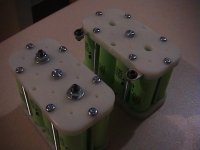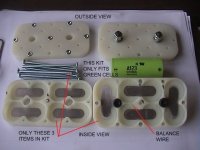I'm coming out before I'd plan to: I going to make a new thread in a couple of weeks when I'm done.
I am building a pack this way but I have some issues I had to overcome.
The clips are $25/hundred. So 15p12s = 180 cells # 2 = 360 clips or 400. $100
The span for 15p was too much so I added rubber bands to keep the straps together.

Didn't work. Some cells didn't drain on my first ride. Then I found cable ties at "big lots". 100pcs 11" for $4. Priced at big box hardware $8 - $12.
Here's the latest plan. Made a 'U' shape jig. The uprights are only 5". Lay cells down, screw the straps with clips into the risers. Feed cable straps every 3 cells are so and pull. Straps don't twist (like they do when "free handed" and you get a solid "flat"
Your idea with "dimple" is perfect!!!!!

Some of my clips are flattened from too much pressure. "dimples' would be the best solution. Lets KISS.

I started with screwing the straps into a wood box. Each one individually fitted. Then I hooked short pieces of wire to the screws to make the pack in series.

No more. I got a new interconnection way that I'll post when I'm done.


The beauty of this system is that once all the hard work is over, it is done! New technology comes out with new cells, just swap out.
With Konions, they self balance so no BMS.
edit: just bought brass strips for $1.60 from the Amazon link above. My copper staps were about $6 and came in 6 ft lengths that I had to cut to 12 inches. The brass are already 12inch length.






